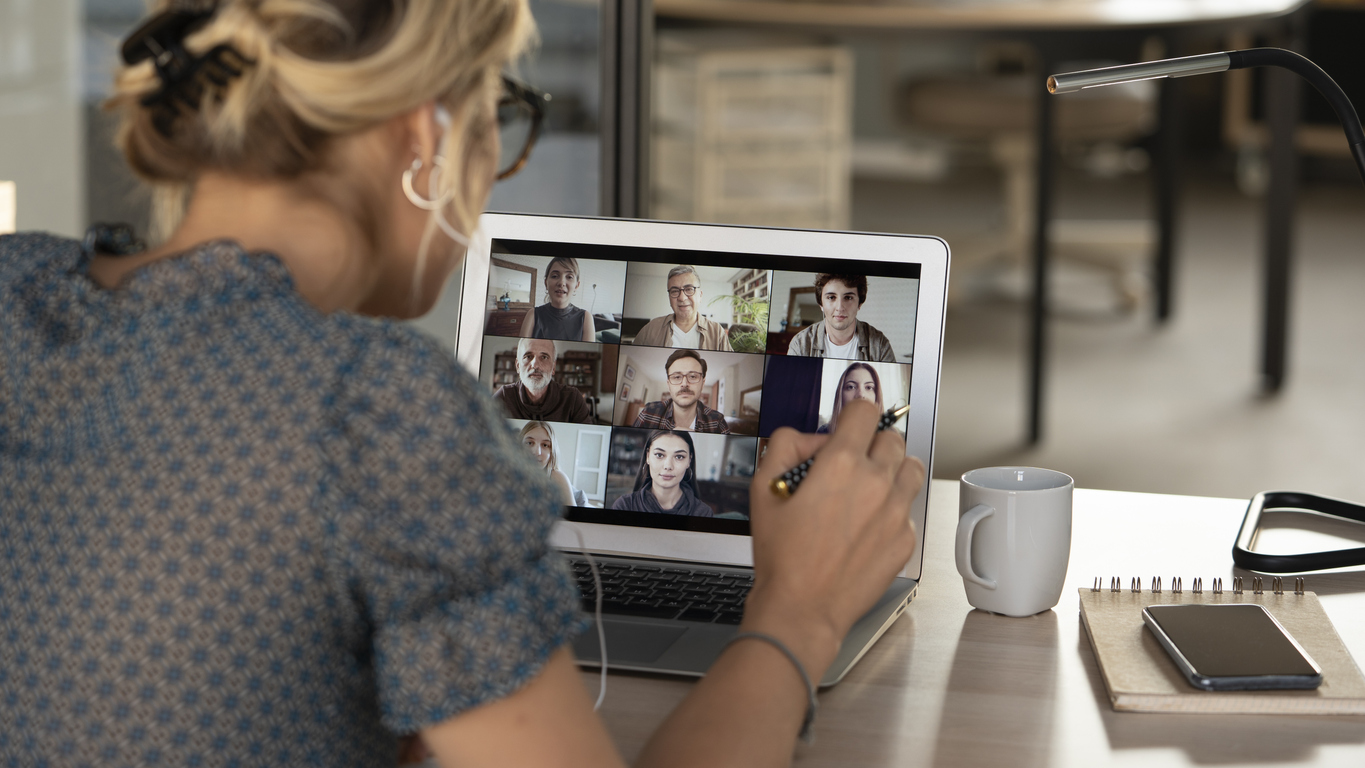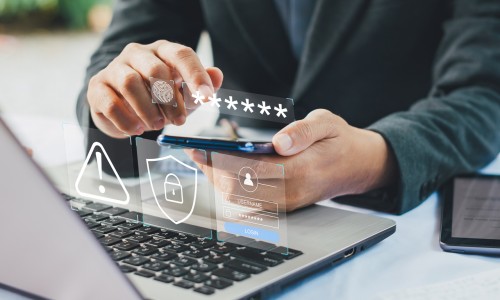
Best Practices for Video Conferencing & Hosting Online Meetings
25 May 2023
In a recent UK survey, 25-45% of respondents reported that they had worked from home at least one day out of the last week. Hybrid working styles have impacted almost every industry and consequently, have made us all more reliant on online meeting platforms to get work done.
As with anything on the internet, however, it’s important to be mindful of the cyber security risks we may be opening ourselves up to. Just like we have to keep our offices safe and clear of prying eyes, the same needs to be done for video conferencing.
Here are 10 best practices people can implement to keep personal and business-related information safe whilst conducting online meetings and video conferences:
Use a ‘Waiting Room’ to Pre-Approve Attendants
Most online conferencing platforms have the option of a virtual waiting room, which attendants can use while they wait to be approved to enter the call. While some might find this tedious, it has serious cyber security benefits because it ensures that the meeting host can directly approve anyone included.
This helps to prevent hackers or even unwanted staff from being on calls they’re not permitted to be involved in, so always check that it’s turned on in your video settings.
Enforce a Roll Call
An added step to boost the cyber security of your calls is with a classroom throwback: a register. At the start of every meeting, ask all participants to put their cameras on and confirm that the people there match the usernames. This prevents the chance of someone being able to falsely use another person’s account to gain access and also could give you some added peace of mind that sensitive information is only being shared with those present.
Disable Unnecessary Features
Once you’ve performed a check of who’s in the meeting, tighten up your cyber security by making sure to disable any features that aren’t necessary to the call. With large meetings, it’s best practice to limit who can have their voice and video functions turned on and to remove the chat room feature. Not only does this encourage better focus, but it limits the chance of sensitive information being leaked.
Don’t Re-Use Meeting IDs
Not changing meeting IDs makes it far easier for unauthorised meeting access to become a problem. A phenomenon known as a ‘meeting bomb’ means that it’s easy for hackers to jump onto the link any time it’s used; the best way to mitigate this is to change meeting IDs with each use.
In doing this, however, make sure to double-check that you’re receiving a link from the right person within your organisation so that you don’t accidentally fall victim to a scam.
Add a Meeting Password and Don’t Reuse It
One of your best defences against cyber security threats derailing video conferences is by maintaining strong password practices. Each meeting should have a unique password that is emailed directly to the participants to ensure total security.
Reusing passwords or sharing them on group messages immediately puts them at risk of being misused. Think of it as a virtual key card protecting who gets to enter your meeting room and who doesn’t – only the people who need it should have it.
If the platform you’re using has the option for two-factor authentication, insist that everyone uses that too. Multi-factor authentication is one of the simplest and most effective ways to boost cyber security.
Flag if a Meeting is Being Recorded
A meeting being recorded and saved offline immediately places added pressure on the security of the information shared in it. All participants in a meeting should be made fully aware if a video conference is being recorded for later use so that nothing is shared inappropriately.
Mention it at the start of the meeting and then make time to remind people of it at least once more in case later attendants missed the first announcement.
Limit Social Media Use
One of the most common ways that sensitive information is put at risk is with people recording content in meetings and uploading it to social media. Even a quick selfie can become a cyber security risk if it makes a meeting ID publicly visible.
To ensure total security, recording for social media should be banned or at least only used when private information and individuals are blurred in the final product.
Use a Virtual Background
A few years back, an image of Mark Zuckerberg circulated online with his computer in the background showing he had covered its webcam. There are always question marks concerning the safety of online video calls and the use of webcams so keep your cyber security extra tight by using virtual backgrounds to disguise your surroundings.
It’s also important to encourage others to do the same so that you’re all better protected from prying eyes. Most video conferencing platforms have plenty of work-friendly options for people to use.
Use Encryption
One of the most popular online meeting platforms faced serious questions during the pandemic regarding the strength of its cyber security. The scandal brought much-needed attention to the necessity of having end-to-end encryption on all video calls.
Encryption essentially refers to the process of encoding information so that it’s harder for people to gain unauthorised access to it. Make sure to check that your online meetings use encryption and whether or not it’s a function you have to manually approve or if it’s included in all calls.
Stay Sensitive
As with face-to-face meetings, all parties need to treat any information shared online with sensitivity. Security and confidentiality start with small practices such as ensuring that unauthorised people aren’t within hearing distance and that nothing is being screenshotted or shared without permission. Remind meeting attendants that just because they’re online doesn’t mean they should be lax about these basic measures.
Keep it Simple
Cyber security for video conferencing isn’t all that different from ensuring the security of in-person work. Make sure that only authorised people have access, update your security measures such as passwords and meeting IDs with each use, and limit the chance of sensitive information being accidentally disseminated, especially online.
By putting these simple practices into action, we can all help keep at-home work and online meetings more secure.
For more information about all things cyber security and how to keep your business safe online, get in touch with the team here at ICT Solutions for knowledgeable advice and guidance.
Our approach to offering cyber security to businesses is personalised to individual needs – this means we will fully assess your company, what your potential risks are and how we can help shape the best solution for you and your team.



